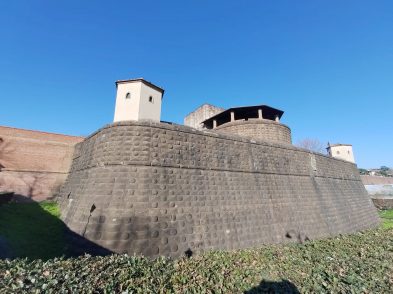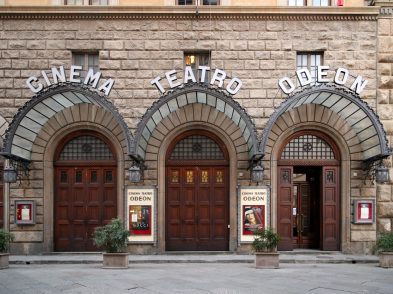By July 1943, it was obvious that Italy was facing imminent defeat by the Allies in World War II. In an attempt to mitigate the inevitable devastation and destruction, the Fascist Grand Council passed a vote of no confidence against Mussolini, removing him from government. Mussolini’s foreign minister and son-in-law, Galeazzo Ciano, was one of those who voted against him. With the help of the Germans, Ciano and the other ‘traitors’ of the Grand Council were arrested and sentenced to death in Verona, then part of the Republic of Salò, Mussolini’s new puppet state in Northern Italy.
Desperate to save her husband, Edda, Mussolini’s favourite child, tried to use Ciano’s diaries, a daily record of events that occurred between 1939 and 1943 that could have proved embarrassing for the Nazi and Fascist leaders, to bargain for his life. She failed; her husband was shot by firing squad in January 1944. But she managed to save herself, her three children and the diaries by fleeing into Switzerland. She did so with the help of Emilio Pucci, a fighter pilot in the Italian Air Force, who, for his part in this venture, was captured and tortured by the Germans but never revealed her whereabouts. This was the same Emilio Pucci who would later become one of Italy’s most famous fashion designers and a symbolic figure of Florence.
Whilst his aristocratic ancestors were Florentine, Pucci was born Marchese di Barsento in Naples on November 20, 1914. His studies in both Italy and the United States culminated in a doctorate in political science from the University of Florence in 1941. A tall, slim, athletic man all his life, Pucci was a member of the Italian Olympic ski team of 1934 and, thanks to this, in 1935, won a skiing scholarship to Reed College in Oregon. It was there he took his first steps in fashion by creating his ski team’s uniforms.
Back in Europe, in 1947, Pucci and a girlfriend were snapped by a Harper’s Bazaar photographer on the slopes of St. Moritz, wearing sleek skiwear he had designed. A story on European winter fashion featuring his designs followed in the magazine’s winter 1948 issue. It caused such a sensation, especially in America, that in 1950 he decided to open his own fashion boutique on Capri. His atelier remained in Florence in Palazzo Pucci at via dei Pucci 6, where he grew up. He presented his first couture collection in France in 1950 and, a year later, took part in the first, historic, Italian fashion show organised by Giovanni Battista Giorgini.
And so began Pucci’s meteoric rise to international fame for his bold, multi-coloured, psychedelic prints, in clingy, light-weight jersey or wrinkle-free stretch materials for the dresses, jumpsuits, Capri pants, bikinis and scarves that jet-setting women like Elizabeth Taylor, Marilyn Monroe, Grace Kelly and Jacqueline Kennedy vied for. Monroe was even buried in a Pucci dress.
When once asked what inspired his designs, he replied ‘Nothing, I don’t need any special inspiration for my fashion, all I need to do is leave my home and look towards Palazzo Medici Riccardi, gaze at the rooftops and the people in the streets, walk the cobblestones of the Centre and glance towards the Loggia dei Lanzi’.
In fact, he applied his inspiration to many different projects. These included designing the patch for the space suits for NASA’s Apollo 15 mission; revolutionising, between 1965 and 1977, the uniforms of the Braniff International Airways’ personnel, even incorporating a plastic ‘space bubble’ helmet to keep the air hostesses’ hair dry, which earned them the nickname ‘Pucci Galores’; and, in Italy, revamping the dowdy uniforms of the traffic police.
Between 1963 and 1972, Pucci was a member of the Italian parliament, representing the rightist Liberal Party. In 1966, having personally lost $1,000,000 in the Florence flood, he worked tirelessly nationally and internationally to help with flood relief, particularly for local artisans.
In 1959, Pucci married his muse, Cristina Nannini di Casabianca, a beautiful Roman baroness. They had two children: Alessandro, who died in a car crash in 1998, and Laudomia, who, since her father’s death of a heart attack on November 29, 1992, aged 78, has been the guardian of his heritage and has guided the company as its image director.
Although by the 1980s, interest in Pucci’s collections waned as a new, Armani-type severity crept into fashion, in 2000, the label underwent a revival when 67 percent of it was acquired by the French Louis Vuitton-Moet-Hennessy Group. In 2006, a British designer, Matthew Williamson, became the masion’s creative director. Today, vintage Pucci creations of the 50s and 60s have become precious collectors’ items.







